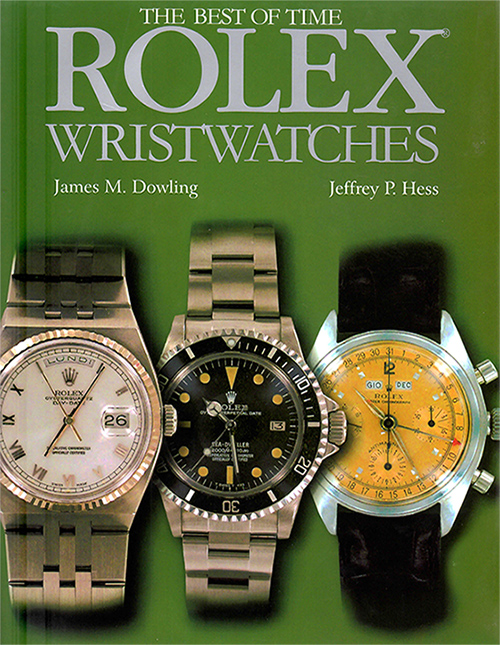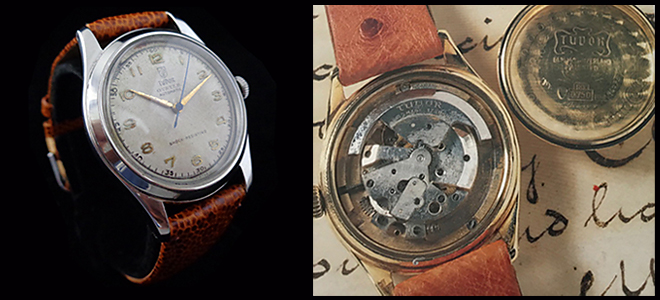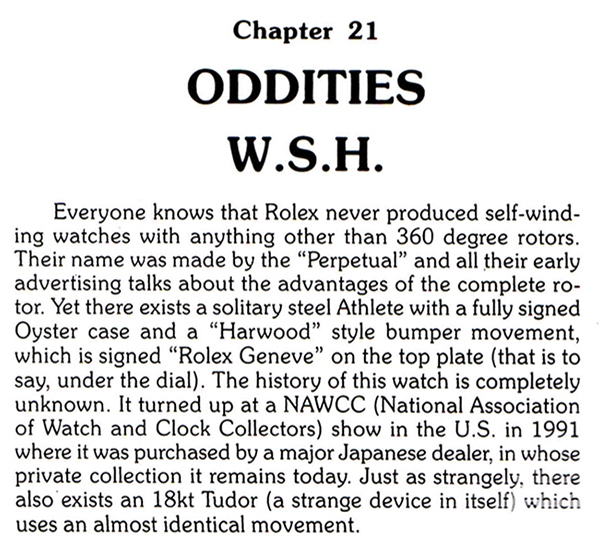Dear Friends,
In an effort to add more pieces to my curated selection of vintage and contemporary luxury watches, I recently took a trip to Europe. During my travels, I made stops in Paris, Cannes, Geneva, and Spain in search of museum collectible timepieces. As a result, I came across a very interesting and mysterious Rolex Tudor bumper watch a watch I wasn’t initially familiar with. With extensive research I learned a great deal about it and now dedicate my March newsletter to this particular vintage watch.
I invite you to discover more about this little-known timepiece, in addition to the other over 20 new watches I recently gathered . These vintage beauties span from the First World War through to the transition period from pocket watches to wristwatches, and finally to the late 1950’s and early 1960’s.
I hope you enjoy learning about these special watches as much as I did. And as always, I would be very happy to assist you in finding that perfect timepiece that speaks to your lifestyle, taste, and budget. I wish you a beautiful spring season.
“WEIRD STUFF HAPPENS”
Rolex Tudor Oyster with ‘Bumper Movement’
1946??
 Everyone knows that Rolex never produced self winding watches with anything other than 360 degree rotors.
Everyone knows that Rolex never produced self winding watches with anything other than 360 degree rotors.
Rolex’s ‘name’ was ‘defined’ by the Oyster (1926) and the ‘Perpetual’ in 1934/5, and all their early advertising talks about the advantages of the complete 360 degree rotor.
Rolex pioneered the system of rotor self winding, as with most Rolex inventions, it was brilliantly simple device and one that ‘made’ history. The simplicity of Rolex design was awarded with Swiss Patent on 16th May, 1933, and was launched in 1934. It was for certain, a better arrangement than the bumper systems that had been introduced by Harwood.
Yet there exist some ‘solitary’ fully signed Oyster case watches, and the ‘Harwood’ style bumper movement.
So why does this ultra early stainless steel 1946 Tudor Oyster have a bumper movement. Rolex didn’t need to use bumpers, so why did it ever think of doing so? I have no idea!
 James Dowling discusses the same model on page 337 and in the last paragraph of page 331 in the “Weird Stuff Happens” chapter of his book. It is clear that the Tudor Oyster he pictures is the only one he’s aware of. In twenty five years of daily involvement in vintage watches, I have NEVER seen or heard of another, except for the Dowling piece. Notice that Mr. Dowling’s watch and this one both have the same 951 model reference.
James Dowling discusses the same model on page 337 and in the last paragraph of page 331 in the “Weird Stuff Happens” chapter of his book. It is clear that the Tudor Oyster he pictures is the only one he’s aware of. In twenty five years of daily involvement in vintage watches, I have NEVER seen or heard of another, except for the Dowling piece. Notice that Mr. Dowling’s watch and this one both have the same 951 model reference.
 I was told that they had a third number stamped beneath their model reference. He believed that this was their number within a small batch of either 50 or 100 prototypes. I have no idea whether this is true or not, but can say that this watch has “46” stamped on its case back below the model reference, which is a format I’ve not seen before on any Rolex Oyster. On the other hand, it was manufactured in either late 1945 or early 1946, so this might be a date stamp. Who knows? I’m guessing that the date stamp theory is correct. Against this, why should Rolex choose to only date stamp this model in this way, and not do the same for any other watch in their range at the same time? So many questions and no real answers!
I was told that they had a third number stamped beneath their model reference. He believed that this was their number within a small batch of either 50 or 100 prototypes. I have no idea whether this is true or not, but can say that this watch has “46” stamped on its case back below the model reference, which is a format I’ve not seen before on any Rolex Oyster. On the other hand, it was manufactured in either late 1945 or early 1946, so this might be a date stamp. Who knows? I’m guessing that the date stamp theory is correct. Against this, why should Rolex choose to only date stamp this model in this way, and not do the same for any other watch in their range at the same time? So many questions and no real answers!
This is a real collector’s oddity. To-date 4 Pieces seem to exist.
If you know about this watch, I will be delighted to hear from you.
Laurent Martinez
